
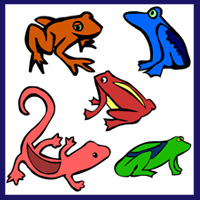
Have you seen an amphibian?
Common amphibians are frogs, toads, salamanders and newts!
Amphibians are fascinating because they live on both land and water - and they have different bodies as babies than they do as adults.
Let's take a look at some of the typical amphibian characteristics.
| Amphibian Characteristics |
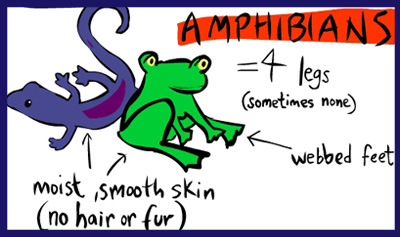
• As an adult, breathes through lungs and its skin.
• Lays many eggs |
• moist, smooth skin (no hair or fur)
• live on both land and water
• webbed feet
• 4 legs (sometimes none)
• cold-blooded
• have a backbone
|
| |
|
Where do Amphibians live?
Amphibians are known for living in 2 places - partly in water, and partly on land.
They live in every continent except Antartica, in many different habitats - rainforests, wetlands, rivers, streams, mountains and even deserts.
Their name comes a Greek word meaning "living a double life", because they start out their lives in the water in one form, and over time grow into another form that can live on land too. |
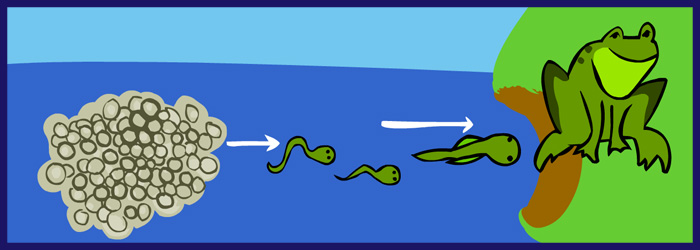
| The Double Lives of Amphibians |
Amphibians lay eggs - thousands and sometimes millions of small, soft jelly-like eggs in the water! They lay so many to increase the chances of survival - many eggs can get eaten by other animals, or not survive due to something else in the environment - for instance flooding or drought.
The early part of an amphibian's life is spent in the water, and usually as they get older then they also spend time on land. Think of a tadpole turning into a frog!!
First out of the egg comes a tadpole - which has gills and fins and no legs. Without lungs and legs, it cannot live on land yet. Over time, the tadpole body will change - it will lose the gills and develop lungs. It will also grow legs - how amazing is that?
Adult frogs live mainly on land, but always close to water. They breathe with their lungs and through their skin. The skin of amphibians is moist and needs to stay moist, so it will dry out without water - this is why they mostlylive in wet or damp places.
The process amphibians go through is called "metamorphosis". Baby amphibians looks completely different than the adult amphibians! |
| |
|
| Important for the world |
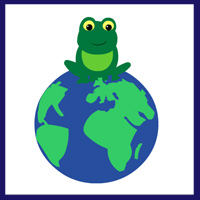
Amphibians eat lots of insects - including insects that harm crops or carry diseases. For instance toads are very helpful to humans because they eat lots of pests that weaken or harm crops.
Toads can only live in a clean and natural habitat, so healthy toads are a sign of ahealthy environment!
Human causes - pollution, the use of pesticides, climate change and destruction of their habitats harms toads and other amphibians. It's important to keep nature clean, healthy and reduce the impact of humans on nature as much as we can!
|
| Cold-blooded |
Like reptiles and fish, amphibians are cold-blooded - which means that their body temperature changes with cold and hot environments. This is why you might often see cold-blooded animals sitting on a rock in the sunshine - it's gathering warmth!
They they have to seek out warmth from the sun to help balance their body temperature, so most of these animals live where it's warm. Sitting on a sun-warmed rock helps warm up their blood. |
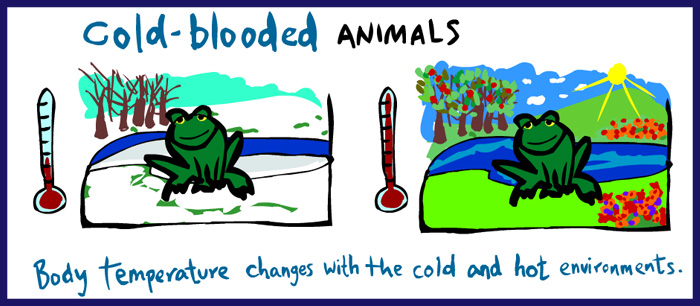
Now you can:
View a similar page about mammals
View a similar page about reptiles.
View our infographic about mammals
View our infographic about reptiles
View the infographics about mammals,
reptiles, amphibians, birds, and fish appearance altogether.

Play a game about animal characteristics
Play a game sorting animals into their correct categories (mammals, reptiles, birds, fish and amphibians).
Learn about warm-blooded and cold-blooded animals
Learn about animal babies
And if you want to learn more science, you can:
Read about Producers, Consumers and Decomposers
Read about the Food Chain
Read about what different kinds of animals eat - Herbivores, Carnivores and Omnivores
Look at an inforgraphic about photosynthesis (how plants make their energy)
Play more animal and science games here.
Click to learn about bigger food chains!
